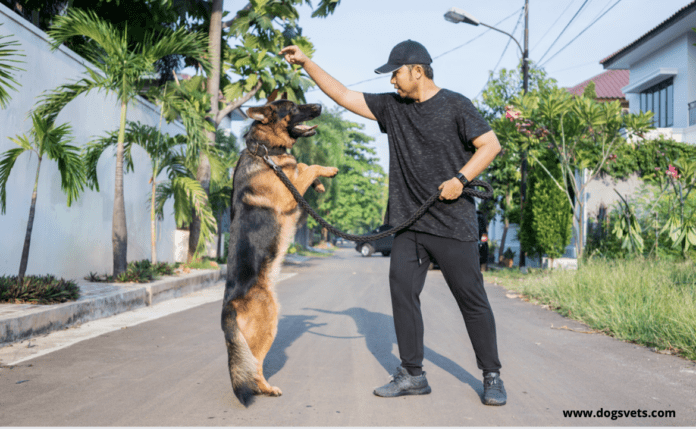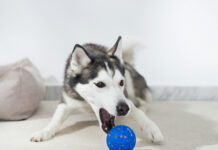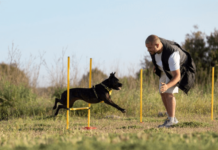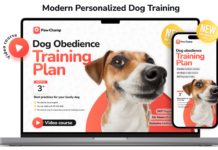Last Updated on July 24, 2022 by Dogs Vets
How to Train Your German Shepherd
There are several different methods of German Shepherd training that you can use. These methods include Positive reinforcement, Clicker training, and Name recognition.
If you’re wondering how you can train your dog, read on for some tips. You’ll soon be well on your way to training your dog in no time.
This article will show you how to train your German shepherd puppy. It will be a great help when it comes to socialization. And don’t worry – it isn’t as complicated as you think.
Positive reinforcement
If your puppy is doing something wrong and you want to correct it, use positive reinforcement as often as you can. Using a food chew or squeaky toy is a great way to redirect your dog’s attention. Then, when you want your dog to do something you want them to do, give them a treat!
Positive reinforcement in German shepherd training is essential for a happy, healthy, and well-behaved dog!
When using positive reinforcement, you’ll be able to change your dog’s behavior and teach it to be predictable and self-controlling.
A good example is the sitting command. A German Shepherd loves a good dog toy! While the word “reward” can be confusing, the process is actually quite simple.
In addition to physical attention, you can also use toys and playtime as rewards. You can also use timeouts to punish your dog if he has bad behavior.
Socialization
There are many reasons to start the German shepherd socialization process as early as possible. As a puppy, your German Shepherd may be more aloof and isolated than you might like. As your dog ages, however, this tendency tends to decrease.
German Shepherd socialization will become less important as it becomes more well-behaved and confident. This breed is naturally protective and will develop aggressive tendencies if left unsocialized.
Although this breed is known to be more aggressive than other dog breeds, they are not more likely to bite a person. Rather, it depends on the owner’s temperament and training.
Unlike backyard breeders and puppy mills, quality breeders will pay attention to a German Shepherd’s temperament during the breeding process. To avoid this, be sure to socialize your German Shepherd with other dogs, cats, and other pets as early as possible.
Clicker training
The first step in clicker training your German Shepherd is to teach your dog to respond to a command.
German Shepherds are guard dogs, so they tend to bark at everything from strangers to television.
But the good news is that this barking can be controlled.
Simply reward the dog when it does what you want them to do, and soon they will respond to a command as well. But if you are unsure how to begin, here are some tips.
Using a clicker is easy. When you click a treat or command, the dog will associate that action with the same behavior. You may have to repeat certain actions several times to get the dog to respond. Make sure that the dog is hungry and alert, and that the training environment is calm.
Timing is critical, since the clicker only works when the dog responds to the sound of the clicker. Once your dog learns a trick with the clicker, it will be easier to teach that behavior in other settings.
Name recognition
One of the key ingredients to a successful German Shepherd training is name recognition. This is the foundation of all training cues and without it, your dog will not respond to your next command.
The best way to train your dog to respond to his name is to use clicker training, also known as marker training. You can use your puppy’s name to get his attention, and he will soon come to love hearing it.
Use your dog’s name whenever you want him to pay attention to you. It helps if you can use it in various environments and with different people, like other family members.
Make sure you use your dog’s name correctly, as negative reinforcement will only damage the name response cue. Instead, try to use the name in a positive way as often as possible. Try not to make your dog confused by your name. Instead, use it in a variety of contexts to make him familiar with it.
Potty training
As with any new routine, potty training your dog can be challenging, but it can also be fun! To keep your dog motivated, create a potty routine, incorporating treats and praise for successful elimination. Then, lead your dog gently back indoors, while removing the water bowl before going to bed.
Your German shepherd will appreciate this routine, and it will be easier to train him if you use it consistently.
To begin potty training your German Shepherd puppy, make sure to feed him or her at set times. A German shepherd puppy will need to go potty roughly half an hour after eating, but timing will vary. Remember that a dog will repeat behaviors that it has been rewarded with food or treats.
By rewarding your German Shepherd puppy for pottying outside, you can ensure he or she will continue to perform the good habit and become a more obedient, confident dog!
Basic obedience
A German shepherd can be trained to sit and lie down by holding a treat in front of its nose. When rewarded with a treat, it will sit and stay that way naturally. It is possible to make sitting a longer duration by using a cue word, “sit,” in conjunction with the gesture.
You can also lure your dog to sit by making a hand motion with a treat. Basic obedience in German shepherd training should begin by establishing your authority and the rules of your household.
During the training process, you should establish the rules of the game: always walk quietly by your side, respond to your commands and behave appropriately at the vet’s office.
You should also incorporate rally training into your German shepherd training routine. Rally is a relatively new sport whereby human/dog teams navigate a course while performing various obedience exercises. They must also pass various signs and other objects along a designated path.
This game encourages teamwork between the handler and the dog, and the training of both is crucial.
Final Thoughts
We hope you enjoyed this article… What are your thoughts?
Pls feel free to share this article!

















